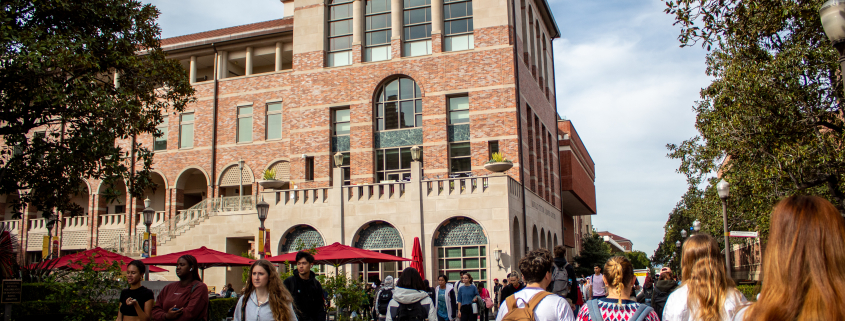Students ‘not surprised’ by rising gun violence

Content warning: This article contains references to violence.
The past five days saw seven shootings take place in the United States, back-to-back, totaling 27 casualties.
Some students said they were largely unsurprised at the frequency of mass shootings within the last few days.
“It’s not something that’s new,” said Colin Li, a freshman majoring in business administration. “But I think it’s important that we move forward and build understanding between communities.”
Karan Gill, also a freshman majoring in business administration, echoed Li’s sentiment, saying the Monterey Park shooting was “disappointing,” but that he wasn’t surprised by it.
The first shooting was late Saturday night in Monterey Park, California, where a gunman fired indiscriminately into a ballroom dance studio. At least 11 people were killed, a majority of them of Asian descent. Then came Sunday, when a gunman injured 12 in a Baton Rouge, Louisiana nightclub. Monday saw two dead because of gang violence at an educational program for at-risk youth in Des Moines, Iowa. Tuesday saw four shootings: two in Half Moon Bay and one each in Oakland and Yakima, Washington.
Other students also expressed concerns about potential racial motivations behind the Monterey Park shooting.
“It was definitely disconcerting, especially as a member of the Asian American community, to see shootings near me perpetrated against my own people,” said Henry Chen, a freshman majoring in computer science.
The Los Angeles County Sheriff’s office has yet to announce a motive. The suspect, 72-year-old Huu Can Tran, was an immigrant from China, his former spouse told CNN. Investigators are pursuing an apparent personal motive.
“Some people take it a step too far where they think that their culture is better or worse than another one, and then that causes them to take drastic steps which can be easily avoided,” Gill said.
Michelle Lee, an exploratory freshman, said she felt as though the gunman chose the Lunar New Year celebration to specifically target people of Asian descent.
“They took that opportunity to just ruin all of it,” she said.

Some students expressed fear at the rise in shootings, though many said they still felt safe inside USC’s gates. The Department of Public Safety patrols the area in and around campus to ensure student safety. (Gina Nguyen | Daily Trojan)
In a press conference Sunday, L.A. County Sheriff Robert Luna told reporters that the weapon used in the Monterey Park shooting was at least illegally modified, if not itself illegal in California. The gun in question, a 9-millimeter MAC-10, was among those targeted in the 1989 assault weapons ban in California; A similar federal ban was enacted five years later. In 2016, California also passed Proposition 63, which prohibited the possession of high-capacity magazines and required background checks before purchasing ammunition.
Jeb Barnes, a professor of political science at the Dornsife College of Letters, Arts and Sciences, said the ability to obtain guns outside of the state — as well as individuals passing down guns through generations — may have been possible avenues for the shooter to acquire the gun, despite the state’s extensive legislation.
“In a system of federalism — where you have widely varying gun laws and very little ability to stop the trafficking of guns across state lines, as well as a legacy of a lot of gun ownership before any kind of ban,” Barnes said, “it shouldn’t be surprising that a whole variety of weapons are available to people that technically should not be.”
The Monterey Park shooting was the deadliest mass shooting in the United States since May, when 19 students and two teachers were killed at Robb Elementary school in Uvalde, Texas. Following the incident, Congress passed a rare bipartisan bill on gun regulations, enhancing background checks on citizens aged 18 through 21 and, for the first time, requiring juvenile records and mental health records to be vetted before purchasing firearms. Democrats were forced to strike out key provisions of the bill — including a ban on the sale of semi-automatic rifles to those under 21 — in order to secure its passing.
“Because we’ve constitutionalized the issue, we’ve tied our hands to passing the kind of comprehensive gun legislation that gun advocates would want to see,” Barnes said.
Despite the proximity of the Monterey Park shooting to USC, most students interviewed by the Daily Trojan said they were not worried about safety on campus. From 9 p.m. to 6 a.m., the University places campus security at every entrance and exit, and requires identification for re-entry to campus grounds after sundown.
Nohemi Vela Guevara, a freshman majoring in neuroscience, said she felt “a little safer inside of campus because of all the security we have.”
The Department of Public Safety also patrols the area in and around campus at all hours of the day to ensure all students feel safe on campus. If there’s ever an emergency on campus, the blue light emergency system allows for students to access emergency services in a convenient and efficient manner.
“I still feel relatively safe,” Chen said. He doesn’t, however, feel safe leaving campus. “I feel safe to go to certain areas that I know are reputed for safety.”
Icesha Sanders, a freshman majoring in occupational therapy, said she was affected by the rising violence.
“Considering that it was only ten or so miles from here … even though this isn’t my home, it hit close to home, in a way,” Sanders said.
Vela Guevara said she has been going about her daily routines since the mass shootings, but not without a sense of insecurity.
“Some of [the shootings] just happened really spontaneously,” she said. “To think that I could be doing my casual day-to-day things and it could happen at any moment — it’s honestly pretty scary to me. And I really hope it doesn’t happen.”

